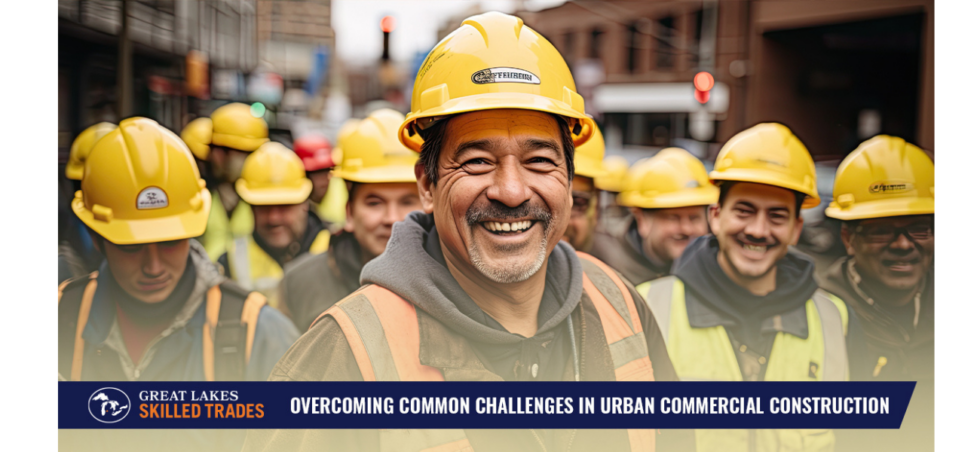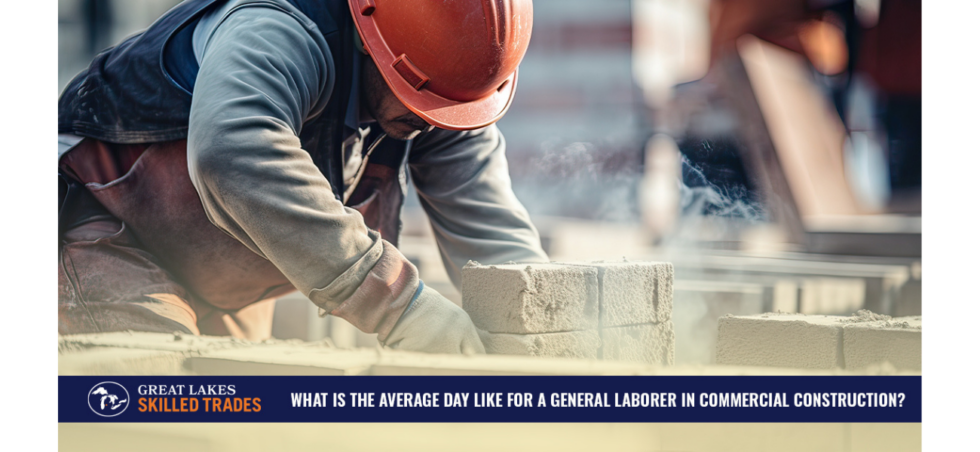The time is now to make a career in the skilled trades. Seventy percent of U.S. construction companies can’t find enough workers to fill their positions. The pay is good. You have the opportunity to build things that will last.
Why not you?
If you decide to build a career in construction, here are some tips to get ahead:
Be a problem solver

It’s a given that the project is probably not going to proceed as drawn up. Something unexpected is going to arise. Wrong materials. Wrong personnel. It’s raining sideways. It’s the nature of construction. “If you’re an excavator, you might run into concrete—but you’ve got to learn your way around that,” says Jimmy Green, president of Associated Builders and Contractors of Michigan. “You have to be a problem solver. Otherwise, nothing ever gets done.”
Diversify your skill set

“At ABC, we encourage people to think like college students—have a major and a minor,” says Jimmy. “If a carpenter is an electrician or an electrician is a welder or a welder is a pipe fitter, at the end of the day, they’ll stay on the site longer. That translates into being indispensable, but even more importantly, it translates into earning more money.”
Be dedicated to safety

The trouble is, best practices are not always the most common practices. Stand out. Always do the right thing when it comes to safety. If you need ideas, here are the five health risks you should watch out for on a construction site:
- Slips, trips, and falls
- Repetitive motion injuries
- Handling heavy equipment
- Electrical shock
- Exposure to hazardous materials
Give a full day’s work

The start time is the time you start work—not the time you show up. If you have to get there 15 minutes early to have your PPE on, have your tool bags on, and be in the right place, that’s part of the gig.
Be a good communicator

It might not be as obvious as skills like drywall installation or equipment operation, but interpersonal communication is an absolutely necessary skill for all crew members to have and continuously practice.
Having effective communication in construction is just as crucial to a team as having the right construction equipment. Both are required to get the job done and make sure the worksite is safe, productive, and efficient.
“Construction is the greatest team sport in the world,” says Jimmy. “It’s all about hand-offs.”
Stay busy

If you finish the thing you were doing, grab a broom. Clean construction sites are safer and build character. The time for checking your social media, texts, and emails is during breaks and lunches. Unless it’s work related, ignore the notifications!
Be a good listener

We’ve all experienced it. You’re talking to someone about something important—at least, it’s important to you—but the other person, the one who is supposed to be listening to you, you can tell they’re not really listening. Doesn’t that drive you crazy?
Don’t be that person.
Instead, practice active listening. That’s the process of listening attentively while someone else speaks, paraphrasing and reflecting back what is said and withholding judgment and advice. If the speaker agrees that what you heard is what they intended to say, you can move on. If not, the speaker needs to reword their statement until the listener really does understand.
Do your part to create an inclusive worksite

The truth is, most skilled tradespeople are white males—most nearing retirement. For example, women make up 51 percent of the workforce but only 3 percent of the crafts. We’ve all heard about the skills gap. We’re not going to fill that gap with just white males. “It’s up to us to create an environment where everyone’s welcome,” says Brian Turmail, vice president of public affairs and strategic initiatives with Associated General Contractors of America.
Embrace technology

Technology is going to be the future of this industry,” says Brian. “Drones. Robots. A hard-case iPad strapped to your tool belt.” If you want to stand out, be the person who knows what Building Information Modeling is, who knows what Lean Construction means. That means you’ve got to stay informed. It means you have to network with other people who are trying to stay current. It means you use technology as part of your own life.
Why not start a construction career today?
The construction industry is one of the largest in the U.S. The need to build homes and commercial buildings and roads and other infrastructure isn’t going away. As your experience grows, you can build a stairway to success, advancing into higher management positions, such as foreman, superintendent, supervisor, project manager, and construction manager. Contractors are always looking for enthusiastic, hardworking problem solvers and team players. Why not you?
What’s next? Consider these posts:
Everything you need to know to become a welder
Everything you need to know to become a plumber
Everything you need to know to become an electrician
Was this blog post helpful for you? Why not subscribe to our blog? It’s free. Just input your email address below. We promise we won’t spam you. However, as our way of saying thanks for subscribing, we’ll send you our e-book, “4 Things to Consider When You’re Looking for a Temporary Staffing Firm.”
Subscribe








